Newcastle, Co. Limerick
Newcastle Poor Law Union was formally declared on the 28th December 1838 and covered an area of 207 square miles. Its operation was overseen by an elected Board of Guardians, 22 in number, representing its 13 electoral divisions as listed below (figures in brackets indicate numbers of Guardians if more than one):
Co. Limerick: Abbeyfeale (2), Ardagh, Ballingarry (3), Castletown (2), Clonneagh, Drumcallagher, Killagholehane, Killeady (2), Kilmeedy, Mahoonagh (2), Monagay (2), Newcastle (3), Rathronan.
The Board also included 7 ex-officio Guardians, making a total of 29. The Guardians met each week at 10am on Thursday.
The population falling within the Union at the 1831 census had been 51,650 with divisions ranging in size from Killagholehane (population 1,673) to Ballingarry (8,651).
The new Newcastle Union workhouse was erected in 1839-40 on a five-acre site at the north of Newcastle West. Designed by the Poor Law Commissioners' architect George Wilkinson, the buildings were planned to accommodate 550 inmates. Its construction cost £6,680 plus £920 for fittings etc. The workhouse was declared fit for the reception of paupers on 18th February 1841, and received its first admissions on 15th March.
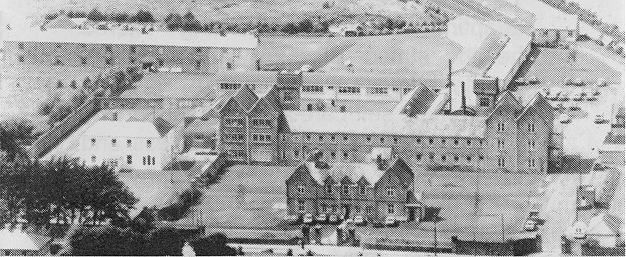
Newcastle aerial view from the south-east.
An entrance and administrative block at the north of the site contained a porter's room and waiting room at the centre with the Guardians' board room on the first floor above.
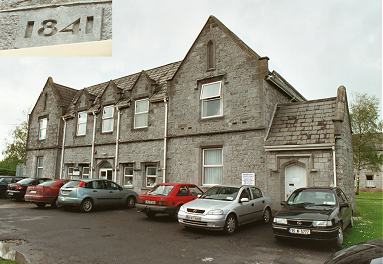
Newcastle entrance and administrative block from the south-east, 2002
© Peter Higginbotham.
The main accommodation block had the Master's quarters at the centre, with male and female wings to each side.
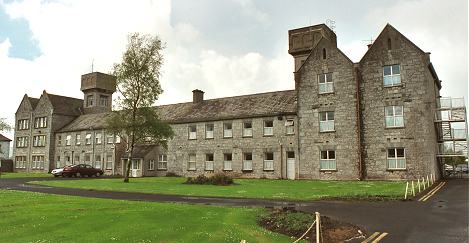
Newcastle main block from the south-east, 2002
© Peter Higginbotham.
Ventilation towers in the roof of the main block were placed over the well-holes of internal staircases to improve the circulation of air through the building.
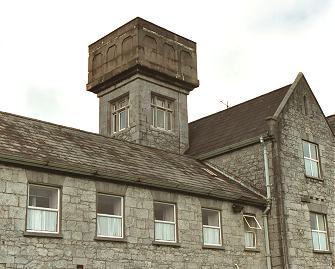
Newcastle ventilation tower, 2002
© Peter Higginbotham.
At the rear, a range of single-storey utility rooms such as bakehouse and washhouse connected through to the infirmary and idiots' wards via a central spine containing the chapel and dining-hall.
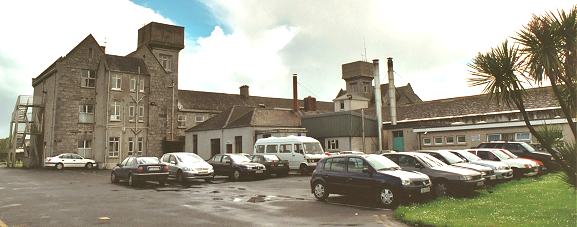
Newcastle utility block and central spine from the north-east, 2002
© Peter Higginbotham.
During the famine in the mid-1840s, houses were hired and alterations made at the workhouse to accommodate an additional 360 inmates. A new block, possibly built as a fever hospital, was subsequently erected at the north-west of the workhouse. A local directory of 1902 reckoned that the workhouse could accommodate 1,270 inmates.
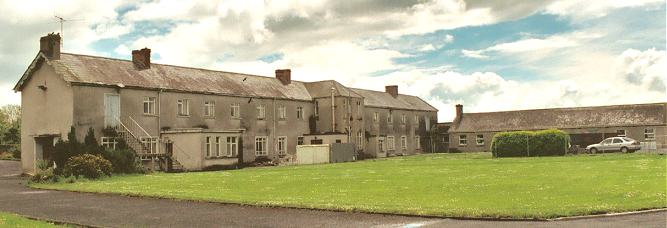
Newcastle new block from the north, 2002
© Peter Higginbotham.
In 1852, the eastern part of the union went to form part of the new Croom Poor Law Union.
From 1892, nursing care at the workhouse was provided by nuns from the order of the Sisters of Mercy.
The former workhouse later became St Ita's Hospital and continues to provide care for the elderly.
Records
Note: many repositories impose a closure period of up to 100 years for records identifying individuals. Before travelling a long distance, always check that the records you want to consult will be available.
- Limerick Archives, Lissanalta House, Dooradoyle Road, Limerick.
Bibliography
Links
- None.
Unless otherwise indicated, this page () is copyright Peter Higginbotham. Contents may not be reproduced without permission.


